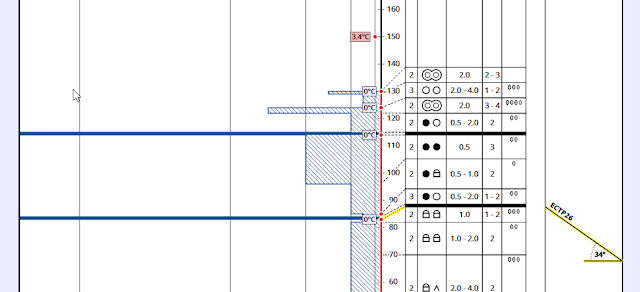A few items of current importance, as a supplement to the last blog.
Particularly in springtime, the interplay of weather parameters - humidity, global radiation, air temperature - have decisive effects on avalanche danger. Even tiny changes in the weather can have huge effects on avalanche danger, both in positive and negative ways.
A glance at the current situation, with lots of dense fog, demonstrates this. At low altitudes where a dense blanket of fog hinders solar radiation, diffuse radiation is lesser than in borderline fog zones at higher altitudes (on 12 April, at 2800 m). In case of above-average (for the season) temperatures, there are no naturally triggered loose-snow avalanches at intermediate altitudes where there is fresh snow, but in higher-altitude borderline fog zones there are. When you’re in mountain terrain, you can actually feel the increased warmth in the borderline fog zones. It is similar with the snowpack, which absorbs the greater warmth. That’s why there is at least superficial moistening of the snowpack.
 |
| A dense blanket of fog has dominated the weather in recent days. |
 |
| An appropriate photo of the weather station. Lampsenspitze. The snow station is lost in dense fog. (photo: 12.04.2019) |
Due to the weather forecast for 13 April (typical of April), it is difficult to draw clear-cut lines of altitudes and aspects where the snowpack will become wet. It’s only possible to determine it on-site.
 |
| Below the Schwarze Schneid, Ötztal Alps (photo: 12.04.2019) |
Most of the current avalanches are small loose-snow avalanches. What requires most caution is that loose-snow avalanches on long, steep plummet paths below 2200 m can scoop up and sweep along the entire snowpack which is thoroughly wet down to the ground, and thereby attain great magnitude. This applies to W/NW - N - E/NE aspects. On south-facing slopes at this altitude the cycles of moistening-and-refreezing are more frequent, so the snowpack is compacter and more sluggish.
 |
| Dry slide of loose snow triggered by skiers at 3200 m on a north-facing slope (photo: 12.04.2019) |
 |
| Recently triggered loose-snow avalanches in the Ötztal Alps (12.04.2019) |
 |
| A huge snowball (like in historic avalanche depictions...and comics) near Stallersattel, East Tirol (photo: 11.04.2019) |
There is another, minor danger potential in North Tirol of very isolated slab avalanches in wind-exposed terrain with shallow snow, e.g. west and northwest-facing slopes, in very isolated cases also on north-facing slopes. Altitudes around 2300 m are most endangered when the snowpack is thoroughly wet down to the ground.
We were recently informed about such an avalanche which occurred on 6 April in the northern Stubai Alps near the Sömen at about 2350 m. A slab triggered when a backcountry skier descended a very steep west-facing slope. Primarily it was a small, fresh snowdrift which was triggered, then the snowpack fractured down to the weak layer at ground level.
 |
| A rare picture: slab “Auf den Sömen” in the Stubai Alps triggered on 6 April 2019 without any consequences. |
 |
| On 8 February 2019, this profile was taken in the immediate vicinity of this avalanche. The potential ground-level weak layers are visible in a snowpack of below-average depth for that juncture of the season. In the above avalanche, the weak layer was probably made weak by moisture. |
Similar things are easily imaginable in the central part of East Tirol and southern East Tirol, where until the beginning of February, comparably striking weak layers formed above the timberline in northern aspects.
The glide-snow avalanches we’ve been warning about all winter long still require caution.
And something else which requires caution: at high altitude in the regions along the Main Alpine Ridge and southwards therefrom, we observe in high alpine regions (above 2900 m) the formation of small, faceted crystals in the uppermost layers of the snowpack, i.e. danger pattern 4 (cold on warm). Our snowpack analysis does not currently give any indication that this will cause problems, since the “slab” which is essential for slab avalanches is often lacking. Nevertheless, it is a development which we need to keep an eye on.
 |
| Recently formed faceted crystals near the surface: 3310 m, 30°, north; Schwarze Schneid, Ötztal Alps. (12.04.2019) |


















































